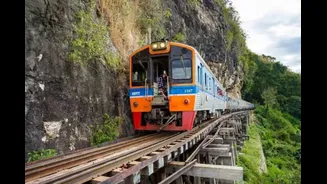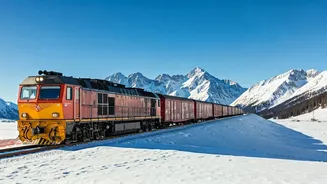Constructing roads, bridges or rail lines has always involved risk, but the human cost of one such project during World War II remains unparalleled. The railway built between Thailand and Burma (now Myanmar)
came to be known as the ‘Death Railway’ because an estimated 1.25 lakh people lost their lives during its construction.
The 415-kilometre track claimed nearly 290 lives for every kilometre laid, making it one of the deadliest infrastructure projects in history.
Why It Was Built
After capturing Thailand and Burma during the war, Japan needed a secure supply route for its troops. Sending goods by sea was dangerous due to Allied attacks, and ships had to travel nearly 3,200 kilometres. To avoid this, Japan decided to build a railway line from Bangkok in Thailand to Rangoon (Yangon) in Burma. This line would link their bases and provide safer access to the Indian Ocean.
Construction Amid War
Work on the railway began on September 16, 1942, from both ends (Nong Pladuk in Thailand and Thanbyuzayat in Burma). Despite dense forests, high mountains, and several rivers, the 415-km line was completed in just 15 months, on October 17, 1943. Of the total stretch, 304 km fell in Thailand, while 111 km was laid in Burma. Even today, some portions of this railway remain operational.
Who Built It
To complete the railway quickly, Japan deployed around 2,40,000 people. Nearly 1.8 lakh were civilian labourers from Thailand, Burma, China, Indonesia, Malaysia, and Singapore. In addition, about 60,000 prisoners of war from Allied nations were forced to work on the project.
The workers faced inhuman treatment. They were made to work for long hours in harsh weather, with little food, no medical care, and constant abuse by Japanese soldiers. Diseases such as cholera, malaria, and dysentery spread rapidly in the camps. Starvation, exhaustion, and physical torture claimed the lives of about 16,000 prisoners of war and thousands of civilian laborers.
Allied forces also carried out air raids to disrupt the construction, causing further casualties. In total, around 1,20,000 workers, nearly half the workforce, died while building the railway.













